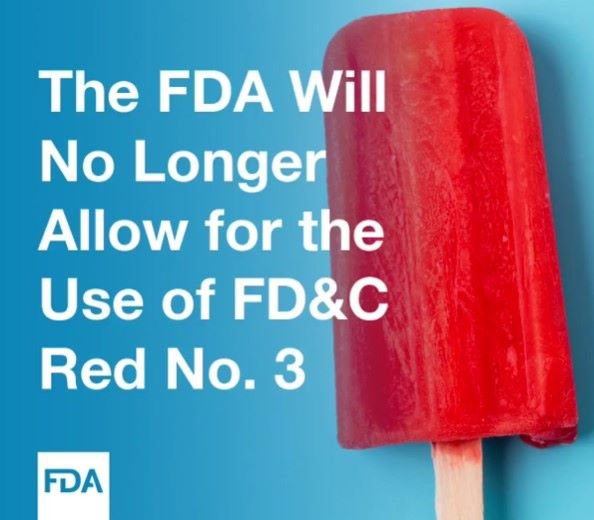Red Alert: FDA Bans Red Dye No. 3 in Foods and Drugs
The U.S. Food and Drug Administration (FDA) has officially banned the use of Red Dye No. 3 in food and ingested drugs, marking a significant milestone in food safety regulation. This decision follows decades of advocacy by consumer groups and recent scientific scrutiny, highlighting concerns over potential health risks associated with the artificial coloring.
Today, the FDA is issuing an order to revoke the authorization for the use of FD&C Red No. 3 in food and ingested drugs in response to a 2022 color additive petition that requested the agency to review whether the Delaney Clause applied. https://t.co/Qd0NFOIUz8 pic.twitter.com/Bpr6XNC8OR
— U.S. FDA Human Foods Program (@FDAfood) January 15, 2025
Red No. 3, a vibrant cherry-red coloring derived from petroleum, has long been a staple in candies, Maraschino cherries, strawberry-flavored milk, and medications such as cough syrups. Manufacturers now have until January 2027 for food products and January 2028 for drugs to remove the dye from their formulations.
Why Was Red No. 3 Banned?
The FDA’s decision was driven by evidence linking the dye to cancer in animal studies. Male rats exposed to high doses of Red No. 3 developed thyroid tumors, prompting its removal under the Delaney Clause of the Federal Food, Drug, and Cosmetic Act. This clause prohibits the use of any food additive shown to cause cancer in humans or animals.
Although the FDA emphasized that the mechanism causing cancer in rats does not occur in humans, the decision reflects a precautionary approach to consumer safety. The ban aligns with similar actions in the European Union, which restricted the dye in 1994, and California, which enacted a state-level ban in 2023.
Health Concerns Linked to Artificial Dyes
Beyond carcinogenic risks, artificial dyes like Red No. 3 have been linked to behavioral issues, particularly in children. Studies have suggested a possible connection between synthetic dyes and conditions such as attention deficit hyperactivity disorder (ADHD). These findings have fueled calls for stricter regulations on other artificial colorants, including Red No. 40.
Tracy Crane, an associate professor at the University of Miami, noted, “Now that Red No. 3 is banned, it will be interesting to see if the FDA turns its attention to other synthetic dyes with similar health concerns.”
How Harmful Is Red No. 3?
Determining the toxic dose of Red No. 3 in humans remains challenging due to ethical constraints on such studies. However, estimates suggest that consuming up to 0.1 milligrams per kilogram of body weight per day is considered safe. This translates to approximately 12 red gummy bears for children and 36 for adults. Still, experts caution against regular consumption of synthetic dyes, citing potential cumulative effects.
Safer Alternatives
Experts recommend opting for natural alternatives such as dyes derived from beets, carrots, or even insects. “If something wasn’t made by nature in that color, it’s probably synthetic,” said Crane. These natural substitutes not only minimize health risks but also support cleaner, more sustainable food production.
Consumers are also advised to read ingredient labels carefully and prioritize whole, unprocessed foods. Many products containing artificial dyes are highly processed and laden with added sugars, which have been linked to various health issues, including obesity and cancer. Hannah Manella, a registered dietitian, emphasized the importance of limiting added sugar to less than 10% of daily caloric intake for cancer prevention.
The Road Ahead
The FDA’s ban on Red Dye No. 3 is part of a broader effort to enhance food safety standards. Under the Biden administration, the FDA has established a dedicated food chemical safety office, signaling a more comprehensive approach to regulating additives and contaminants in the food supply.
The ban on Red Dye represents a step forward in protecting public health while encouraging manufacturers to innovate with safer, natural alternatives.
Also see:
Auspicious Amrit Snan at Maha Kumbh 2025
Blue Origin New Glenn Rocket Launch Delayed
China Considers TikTok US Sale to Elon Musk
Maha Kumbh Mela 2025: A Historic Convergence of Devotion and Tradition
—————————————————————
It would mean the world to us if you follow us on Twitter, Instagram and Facebook.




